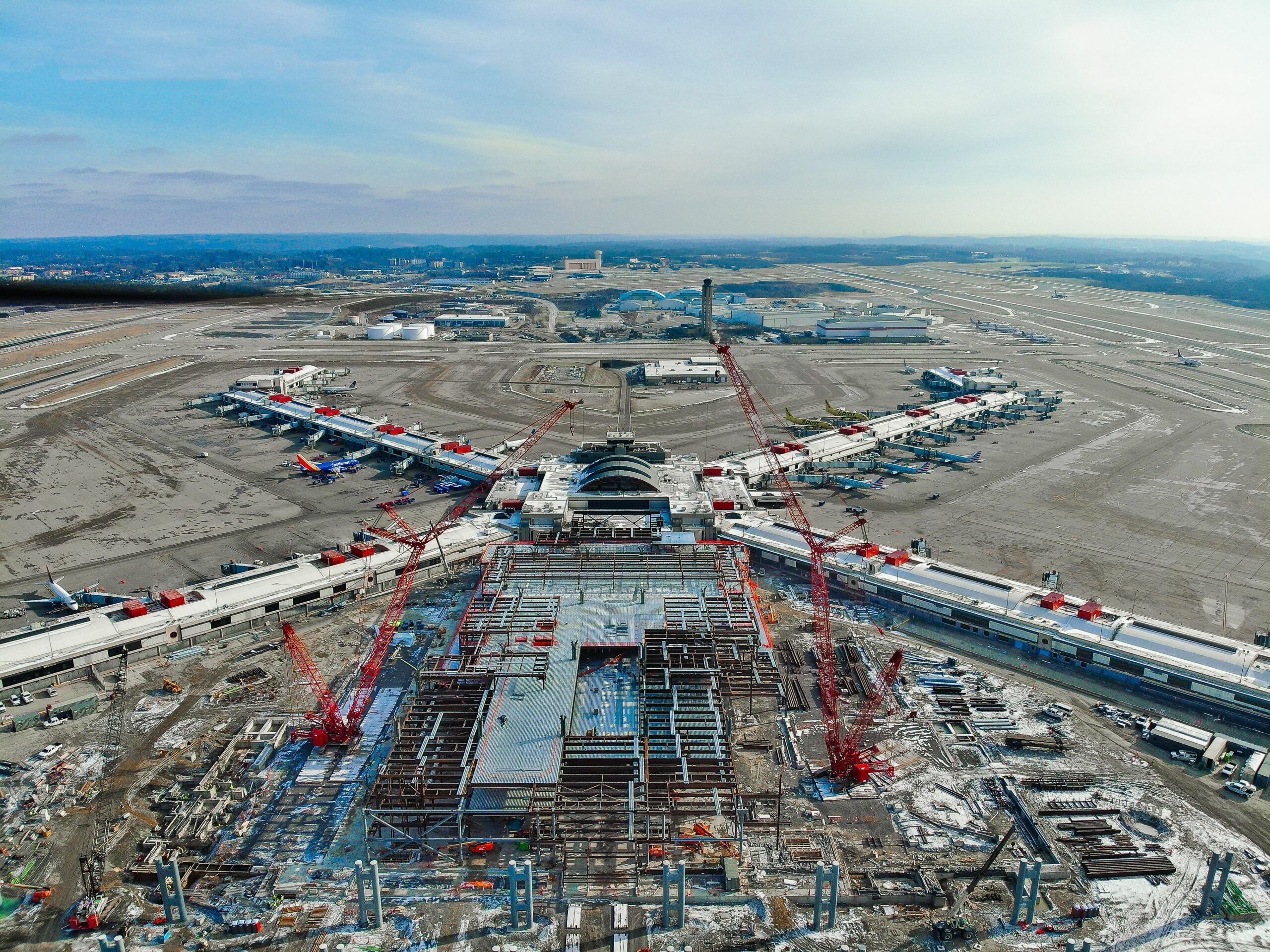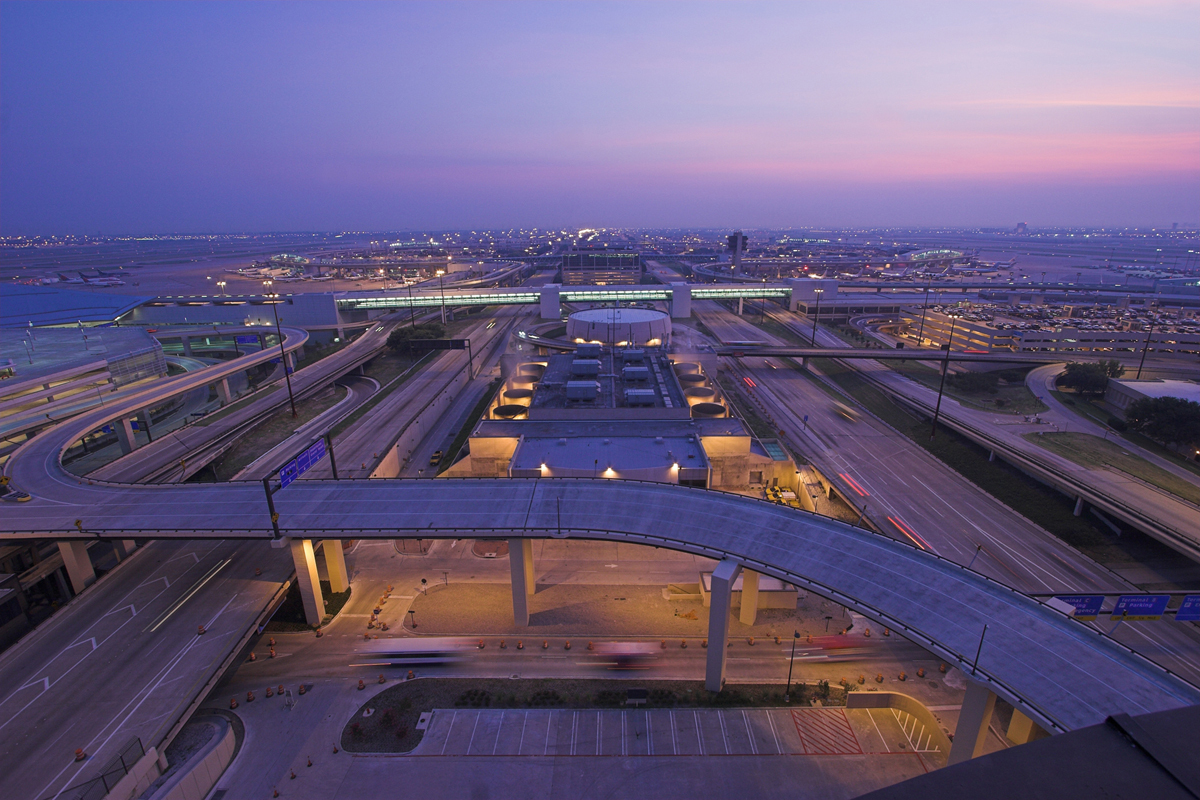By Holden Wilen – Staff Writer, Dallas Business Journal
April 3, 2023
https://www.bizjournals.com/dallas/news/2023/04/03/airport-infrastructure-funding-trends.html
Airports across the U.S. are racing to complete large terminal projects as passenger demand escalates in the post-COVID recovery period with limited funding available.
A new $1.5 billion terminal opened at Kansas City International Airport in late February. In January, Nashville International Airport Airports reopened its newly renovated Grand Lobby featuring a consolidated security checkpoint and new concessions as part of a broader $3 billion, multi-phase overhaul.

Efforts are underway at Dallas Fort Worth International Airport as well. Last year, airport officials signaled an intention to start moving forward again with the long-awaited construction of Terminal F when they submitted a $27.8 million capital spending request to the airlines to cover design costs. A spokesman for the DFW said the airlines approved the request but did not provide any further update on the project, which remains at the center of negotiations for a new use agreement between the airport and American Airlines Group Inc.
DFW also continues to move forward with a $2.3 billion project consisting of renovations and added gate capacity at Terminal C.
Airports are moving at a hurried pace to get projects completed because of pent-up demand from the pandemic, said Clay Paslay, managing partner and CEO of Fort Worth-based airport development consulting firm Paslay Group. He also said resources are limited, even despite the bipartisan $1.2 trillion infrastructure investment law passed by Congress two years ago.
Airports Council International-North America estimated in a recent study that U.S. airports need $151 billion over the next five years to fund necessary infrastructure projects, up more than 30% from $115 billion two years ago. The total cost of these projects dwarfs the funding available through annual the federal government’s Airport Improvement Program, passenger facility charges, grant funding available through bipartisan infrastructure law and airport profits.
Paslay, who led capital development for DFW Airport for 25 years before retiring in 2006 to start his firm, provides airport owners with executive program management services to help them get large capital projects done. The firm assisted on the projects at Kansas City and Nashville. He discussed the latest trends in airport development with the Dallas Business Journal:
Why are we seeing so many large airport infrastructure improvement projects right now?
Prior to COVID, we started seeing a lot of projects really starting to gear up as a result of the market growth. Then COVID happened and everything just shut down. Demand is now starting to reemerge. All of the airports that were already kind of lining up to get capital programs underway are really aggressively pursuing those now. It’s a pretty significant wave in the industry. There hasn’t been a lot of capital improvement in airports in the last 30 or 40 years, so they’re at that useful life threshold where they really need to come in and do some things. The stimulus funding from the bipartisan law has also helped. The most unique thing about it is the ability to use those funds on terminal-related projects. Historically, [Airport Improvement Program] funds were not allowed to be used on terminal-related projects. The law opened that up so that you could use it for terminal projects like baggage systems, security checkpoints and expansion of terminals.
Yet you still see an issue?
They release $1 billion dollars in grants and it helps, but it’s still a long way from the problem. It’s a little bit like showing up at the house fire with your neighbor’s water hose. It’s appreciated, but it’s never going to get you all the way there.
How do you see the reauthorization of the FAA later this year impacting airport infrastructure funding?
If they can open up the utilization of the Airport Improvement Program funds as they have with the bipartisan bill for terminals, certainly that will help dramatically. Of course, the [passenger facility charge] funding increase has always been a topic of discussion over the last 20 years, yet it has been fixed. That’s another funding opportunity for airports in the United States that has just kind of been sitting because of political interest not to raise it. I think that discussion, assuming they can get some relaxation of the restrictions for what the funds can be used for, and cut some of the bureaucracy down in terms of getting grants in place so airports can actually use those funds would dramatically help.
What other trends are you seeing?
We see a lot of technical technology trends. We’re the executive program manager at the Pittsburgh terminal, and they’ve incorporated a lot of technology into their terminal development. DFW is using a smart glass product that allows you to control the amount of sunlight or rays that come through the glass. We’re starting to see a lot of technology uses as it relates to sustainability objectives that airports have. A lot of airports have a target of being net zero by a certain year. DFW is a big leader in that area. In the construction services arena, you see things like DFW did with their high-C gates where they build the facilities remotely and then move them in. The concessions environment is always evolving. You get a lot of concessionaires now doing people-less concessions where you walk through a little gate and swipe your card. You pick up what you want then you just walk out.
This interview has been edited for clarity and brevity.

